While the grandeur of a shower head and large expanse of glass may create an eye-catching environment, bathroom designers shouldn’t forget what’s underfoot. Shower trays or shower floors are an vital design element of the whole showering space.
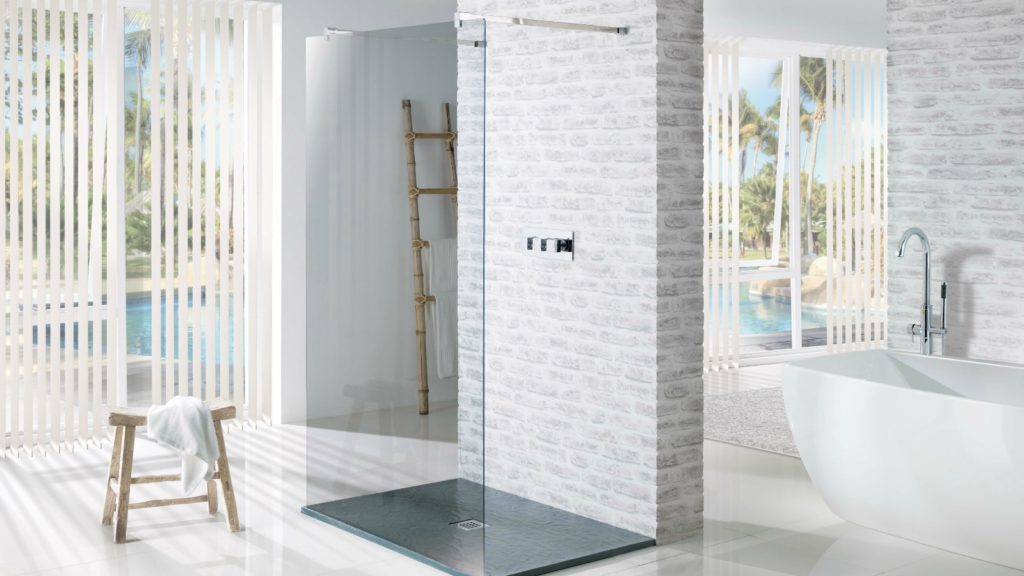
Adding to PJH’s Bathrooms to Love Collection, is a slate-effect cast stone shower tray, which measures 25mm high. It has a slip resistant finish and a tested flow rate of over 32 litres/minute
It’s a message that sales and marketing director of Lakes Mike Tattam agrees with, as he comments: “It’s important when designing and selling a quality showering space that you look at the complete space and define it.
“It’s easy to focus just on the beautifully-shaped shower head or contemporary hardware, but the ultimate showering experience comes from a combination of glass, hardware, frame and floor.”
Sponsored Video
In fact, such is the significance of the tray to the complete shower environment that Grohe and Lakes have both introduced their own collections.
Grohe launched a seven-strong acrylic shower tray collection, last year, while Lakes has just introduced stone resin trays with antibacterial protection.
Fashion and function
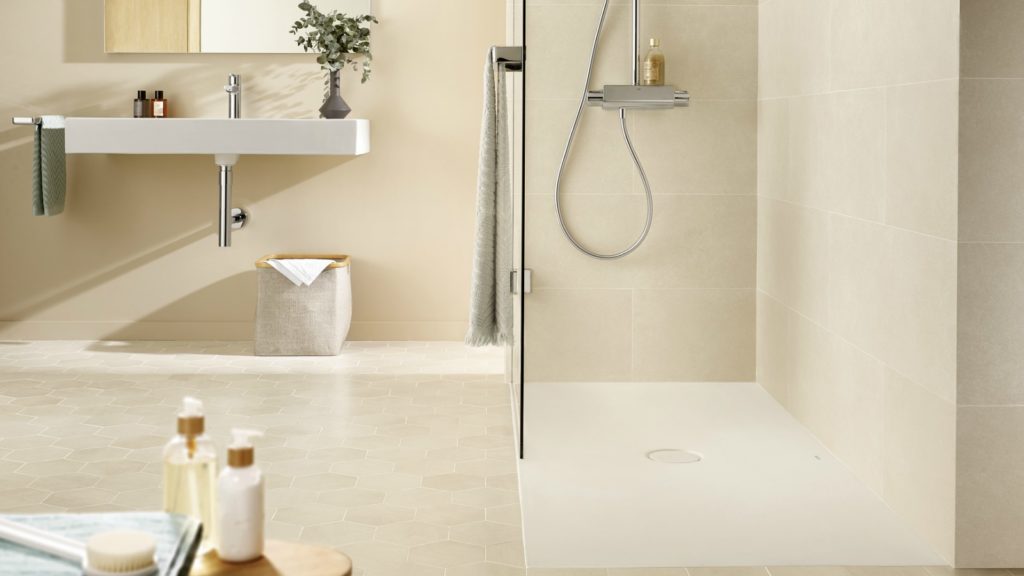
Sanceramc vitreous china trays from Roca feature an anti-slip surface and are slim so can be flush-fitted. They can also be cut to size
Far from being a commodity product, the shower tray has been re-imagined as a fashionable and functional element of the bathroom.
Low-level, almost imperceptible if required, the modern shower tray is now available in a raft of colours, materials and textures to suit the interior demands of many bathroom projects.
Texture has become increasingly significant for shower sales to offer the added protection of anti-slip.
It allows designers to not only upsell but meet the needs of the ageing population and even help future proof their schemes for customers with inclusive bathroom schemes.
And certainly anti-slip now seems central to the design of shower trays, rather than just an optional extra. Ideal Standard introduced anti-slip shower trays at ISH, as did Roca which unveiled models in slim ceramic with anti-slip – Sanceramic.
But in stark contrast to the subtleties of anti-slip – whether through integral texture or a surface treatment – one of the stories of shower trays this year has undoubtedly been colour, as evident at ISH.
Colour customisation
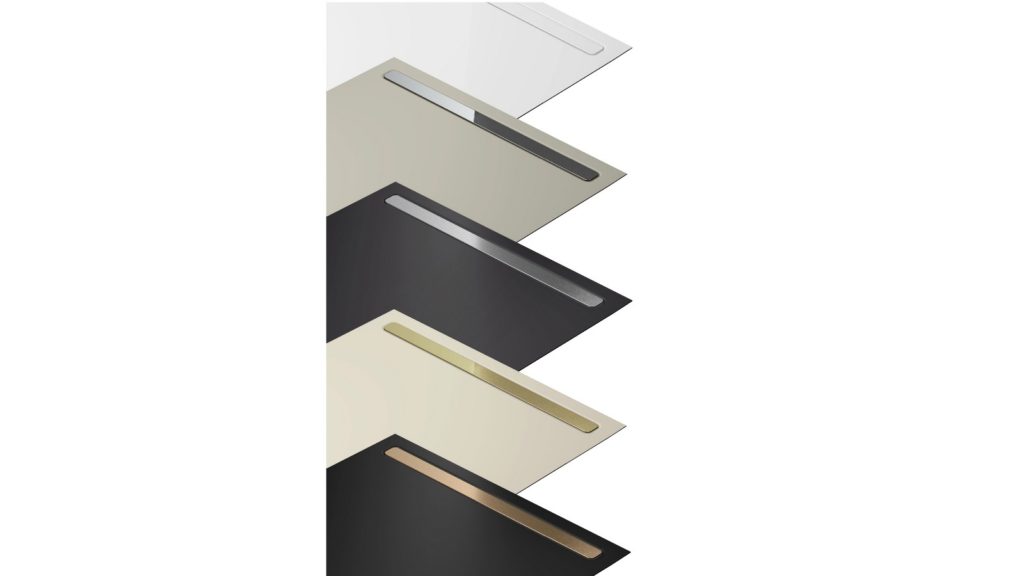
The Nexsys 4-in-1 installation-ready shower tray from Kaldewei is available in 17 colours, 20 dimensions, with five waste finishes and in three surface options including anti-slip. It makes a total of 5,000 possible design combinations
Available in a range of fashionable and neutral palettes, designers can choose from a variety of decors to blend of standout in a bathroom scheme.
Head of sales for Kaldwei UK Adam Teal explains“Through the use of colour, Kaldwei is enabling customers to express their individuality within the bathroom.”
He continues explaining designers can either “bring harmony via co-ordinated design and a single colour palette” or “make a bolder statement contrasting colours and finishes.”
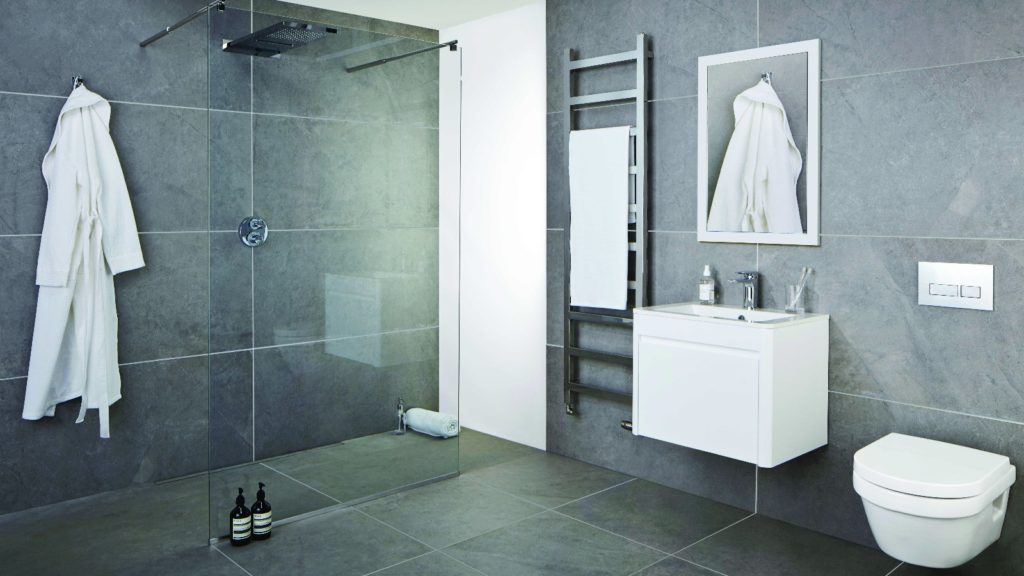
Designed to create wetrooms, the Infinity single-fall wetroom tray from Abacus is claimed to be the only product of its kind where the slopes of the former and drain are fully integrated and sealed.It can be installed level with the floor or raised
But what are the most popular options that designers should consider as part of their arsenal of bathroom sales?
UK Country manager Samantha Wake points out: “While white is still the most popular colour in our shower trays and floors, there has been a change in the colours and finishes being chosen. Forty percent of Bette shower trays or floors are sold in matt, rather than gloss colours.
“There is a high demand for various shades of grey and beige. Matt colours are also getting darker with browns to dark anthracites popular.”
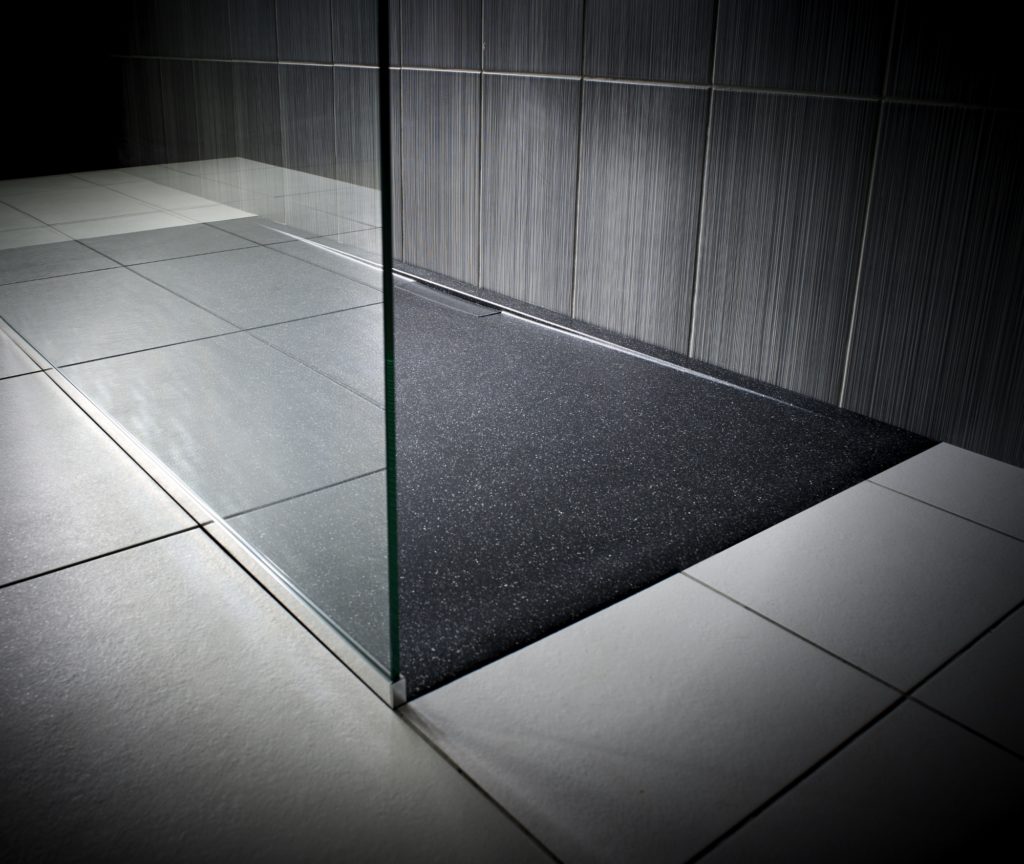
Evolved by JT measures 25mm deep and has been designed to offer the look of a wetroom. It comes in 13 sizes and five colours, in plus gloss and matt white
Head of marketing and product development at Saniflo Ann Boardman agrees, adding: “In terms of colours and finishes, products that replicate natural slate and stone have proved particularly popular and this trend looks set to continue.”
She highlights that neutral tones of black, grey, sable, chocolate, white and grey, are making their mark in shower tray sales.
Certainly it can be reflected in recent product launches, with Merlyn adding Pure Black and Sandstone to its existing Slate Black, White and Fossil Grey Truestone Trays.
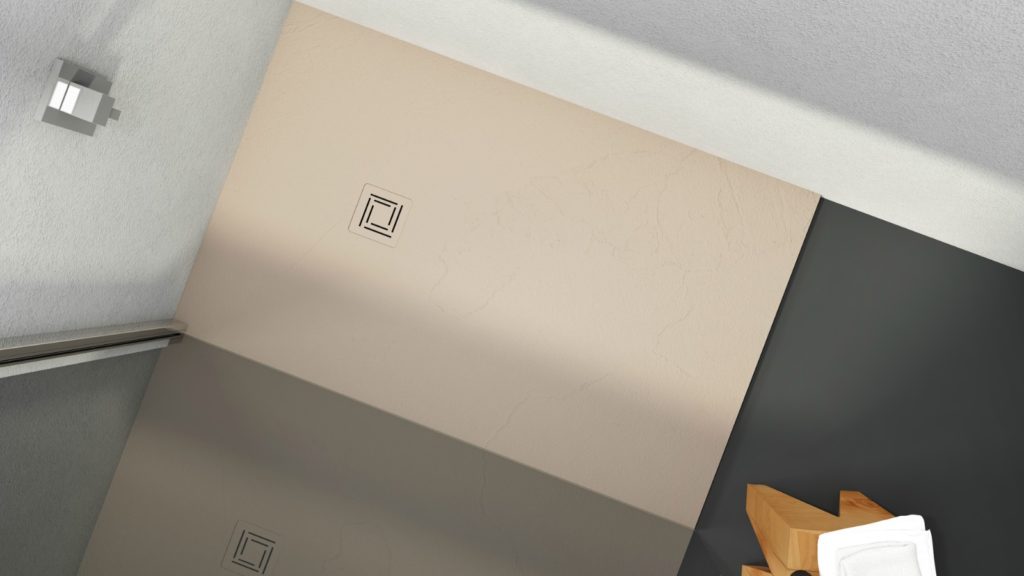
Pure Black and Sandstone finishes have been added to the textured slate shower tray collection, Truestone, from Merlyn. Measuring 30mm high, the trays come with a 90mm fastflow waste
PJH has also introduced a slate grey shower tray to its Bathrooms to Love collection. And Lakes has introduced a collection of its Lakes Stone shower trays in a choice of White, Cotswold Grey and Anthracite.
The wide array of colours meet the growing trend for greater customisation in the bathroom.
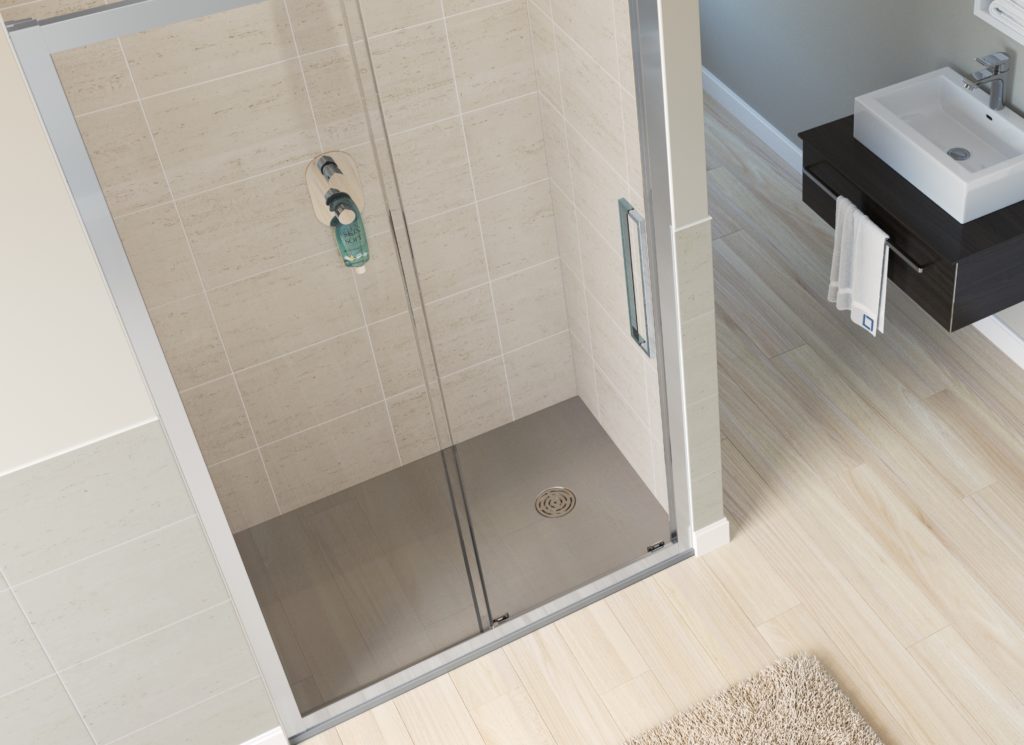
Made from stone resin, Lakes Stone shower trays are rectangular, matt finish trays with anti-slip and anti-bacterial properties. The 30mm trays can be inset into the floor
At ISH Kaldewei introduced its Nexsys shower surface in 17 decors and five waste finishes, three surface finishes and in 20 sizes. It offered bathroom designers a choice of up to 5,000 possible combinations.
It’s possibly little surprise it has already won a Good Design Award and IF Design Award, after being singled out as Best of the Best for Innovative Materials and Innovative Architecture at the Iconic Awards.
Size matters
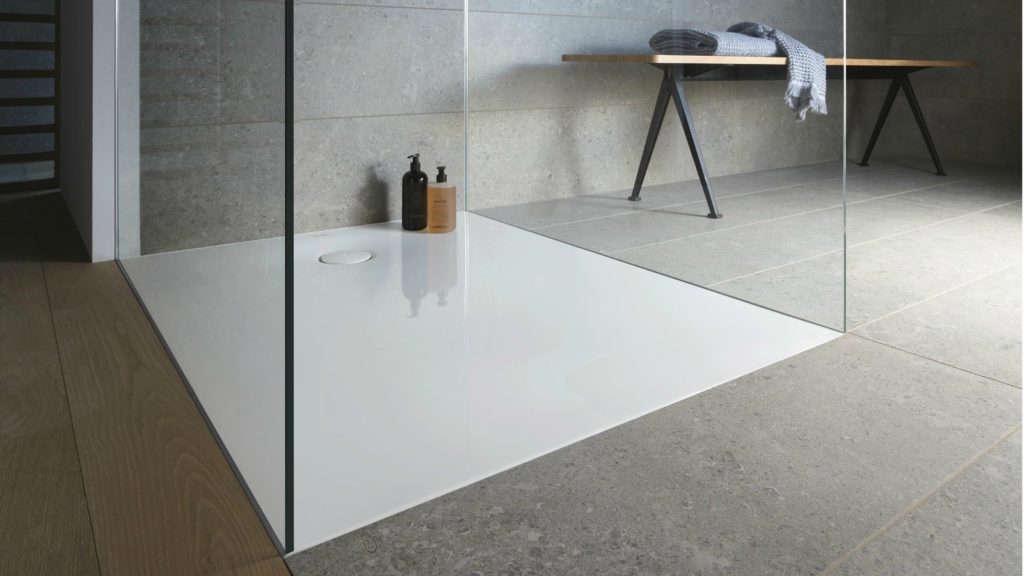
Tempano arylic shower trays from Duravit some in 27 sizes, in a choice of square and rectangular formats. It can be installed flush with the floor, semi-recessed or floor-mounted
But equally significant to bathroom designers is the broader choice of shower trays sizes now available on the market, widening the opportunities for showering environment installations.
Individuality and flexibility are key criteria for bathroom designers, particularly working in challenging spatial situations.
And this need for a wider choice of shower tray sizes to suit a greater variety of bathroom projects was reflected by both Duravit and Kaldewei at ISH. Duravit introduced Tempano in a choice of 27 sizes, in square and rectangular versions.
While Kaldewei extended the number of options of its Nexsys shower floor to include 12 additional sizes, bringing the total to 20. Designers now have the option of using Nexsys in sizes measuring from 800mm to 1700mm.
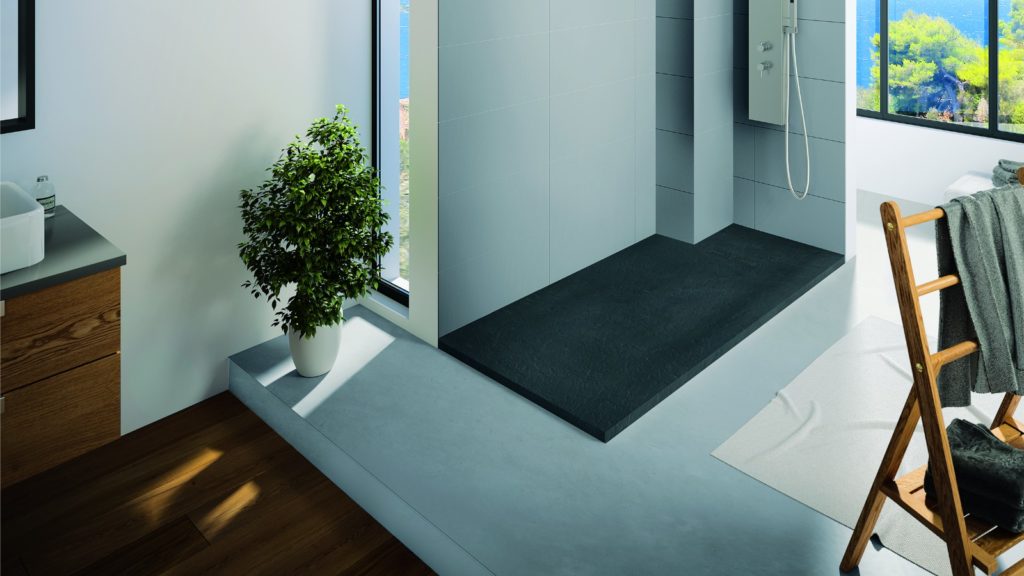
Saniflo Kinerock is shown here in Anthracite Grey and in a model which measures 1800 x 900mm but can also be cut on site. It measures 40mm high and features a textured finish
However, manufacturers have also worked on creating trays which can be cut-to-size on site, such as Saniflo’s Kinerock and Kinestone.
Ann Boardman of Saniflo explains: “Customisable options enable spaces to be converted that previously were potentially inaccessible due to some obstruction on the other. Cut-able shower trays solve this issue.” Roca Sanceramic trays, which reach up to 1800mm, can also be cut to size.
Iconic status

BetteFloor Side shower features an outlet offset to the wall is available in a choice of sizes and standard or 22 exclusive matt colours. It is also available with Bette Upstand for silicone-free connection to the wall
Certainly bathroom designers cannot be floored with the array of shower tray options now available on the market.
From a broad church of colours, through to textures and materials – offering anti-slip and even antibacterial properties – shower trays remain an iconic part not only of the showering environment but the bathroom space, as a whole.



